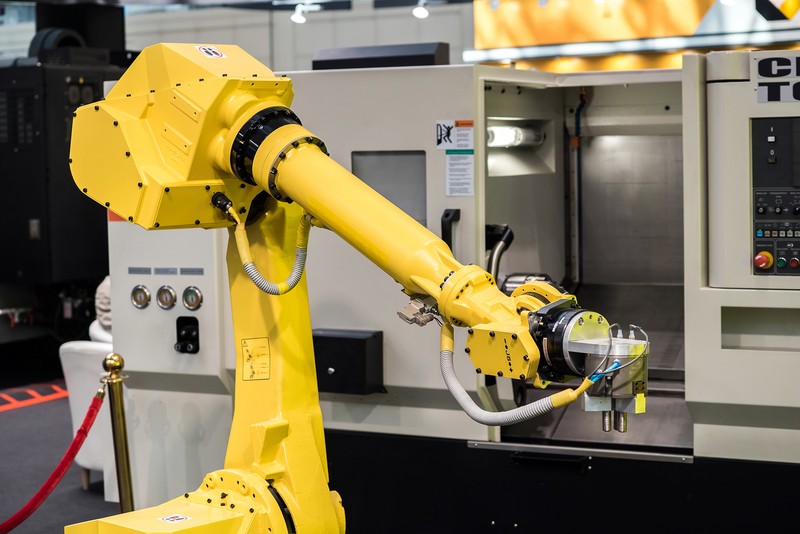An AMS (automated manufacturing system) is an interlinked network of material handling terminals that automatically operate a wide range of parts together. They are powered by computer control. The terminals are also interlinked by a chain that merges all manufacturing features. What are the different types of manufacturing automation systems? Read on to find out.
About Automated Manufacturing System
This system facilitates part processing, parts routing, tool changing, and part handling. Further, a manufacturing automation system is specially designed to exhibit high integration, automation, and flexibility. It comprises various enabling technologies like computer-aided process planning, computer-aided design, flexible manufacturing and assembly, computer-aided manufacturing, robotics, computer-aided testing, production control, and planning, and automated material handling.
Automated Manufacturing Systems have Evolved
Automated manufacturing systems have evolved over the years. By the 1970s, manufacturing automation was a popular industrial production method. This system leverages technology to achieve production, process, and task automation. It is specially designed to boost industrial output and make it more rapid and efficient.
Automation improves productivity, especially for manufacturers with limited person-hours and considerable man-hours moved to operating, designing, installing, directing, and resolving software, robots, automated systems, equipment, and machine algorithms. Automation has transformed the way manufacturing work is done by enhancing productivity and the level of expertise required to guarantee productivity.
Types of Automated Manufacturing Systems
Three levels of automation production proficiency that have developed from manufacturing automation include: flexible, programmable, and fixed automation. These types of automation are structured to meet various production demands of industry divisions.
· Fixed Automation
Fixed manufacturing automation is also known as hard automation. It is a system that automated production activities and computing are set to generate one product. The production cycle and operation are secured by the setup of the machines, equipment, and tooling are assigned for high-manufacturing requirements. Fixed automated systems are designed to fabricate identical products.
When the system is set, changing product modes is hardly possible. The complexity of this system is due to the combination and harmonization of numerous operations and cycles involved in generating one unit. Implementing fixed automated manufacturing equipment and designs can be costly. However, the increased demand volumes and rates for the items they are structured for are often depreciated by the increased demand volumes and rates.
Once implemented, the equipment cannot be configured to accommodate the production of different units. Fixed automated systems are ideal for high manufacturing rates. Examples of fixed automated systems include
- Web processing and reorganizing systems
- Assembly automated machines
- Chemical generating procedures
- Machining transfer networks
- Material conveyor machined
- Coating and paint automated procedures
Programmable Automated Systems
Programmable automation facilitates the changing of layout and performance cycles of equipment based on commands programmed or coded in the system. The programmable automated system enables the writing of new approaches in each process.
It also facilitates batch product manufacturing varying from a few dozen products to numerous units manufactured in a single cycle. Implementing this system for general use equipment is a costly affair. However, the system is flexible and enables modifications in product setup and low manufacturing output. Programmable automated systems are ideal for batch manufacturing cycles. Examples of programmable automated systems include;
- Numerically regulated machine tools
- Industrial tools
- Programmable logic controllers
Flexible Automated Systems
Flexible automated systems are structured to adjust quickly and respond fast to changes within the production line. These changes include the quantity and type of product. Computerized systems that regulate the machines are organized and controlled by humans through human-machine interfaces or computer coding.
The system can be set up to generate different product types concurrently. A centralized computer system regulates material handling and manufacturing systems. This system is designed to aid batch procedures for companies that manufacture various products in medium to low manufacturing cycles.
Implementing this system to generate a custom setup structure can be expensive. However, it can execute production concurrently for different products at medium manufacturing rates. The differences in product designs are minimal. Production downtime in-between batches do not harbor this system. Further, computer programming facilitates changeover. You can use this system to execute customized products. Examples of flexible automated systems include:
- Assembly systems
- Robotics
- Material handling systems
Finally
Automated manufacturing systems boost efficiency and productivity in businesses while enhancing product quality. Further, they require little human input to operate.

Comments